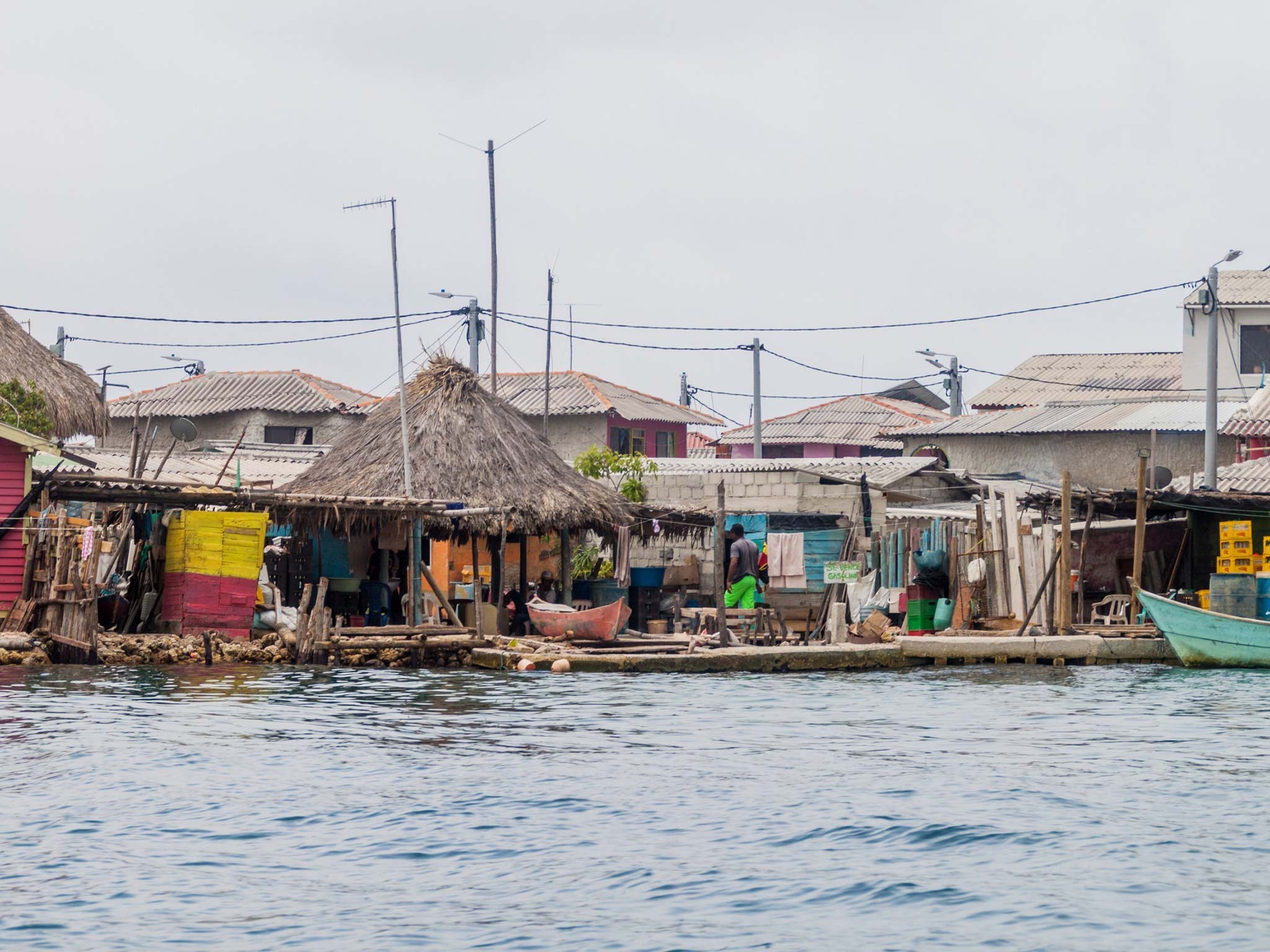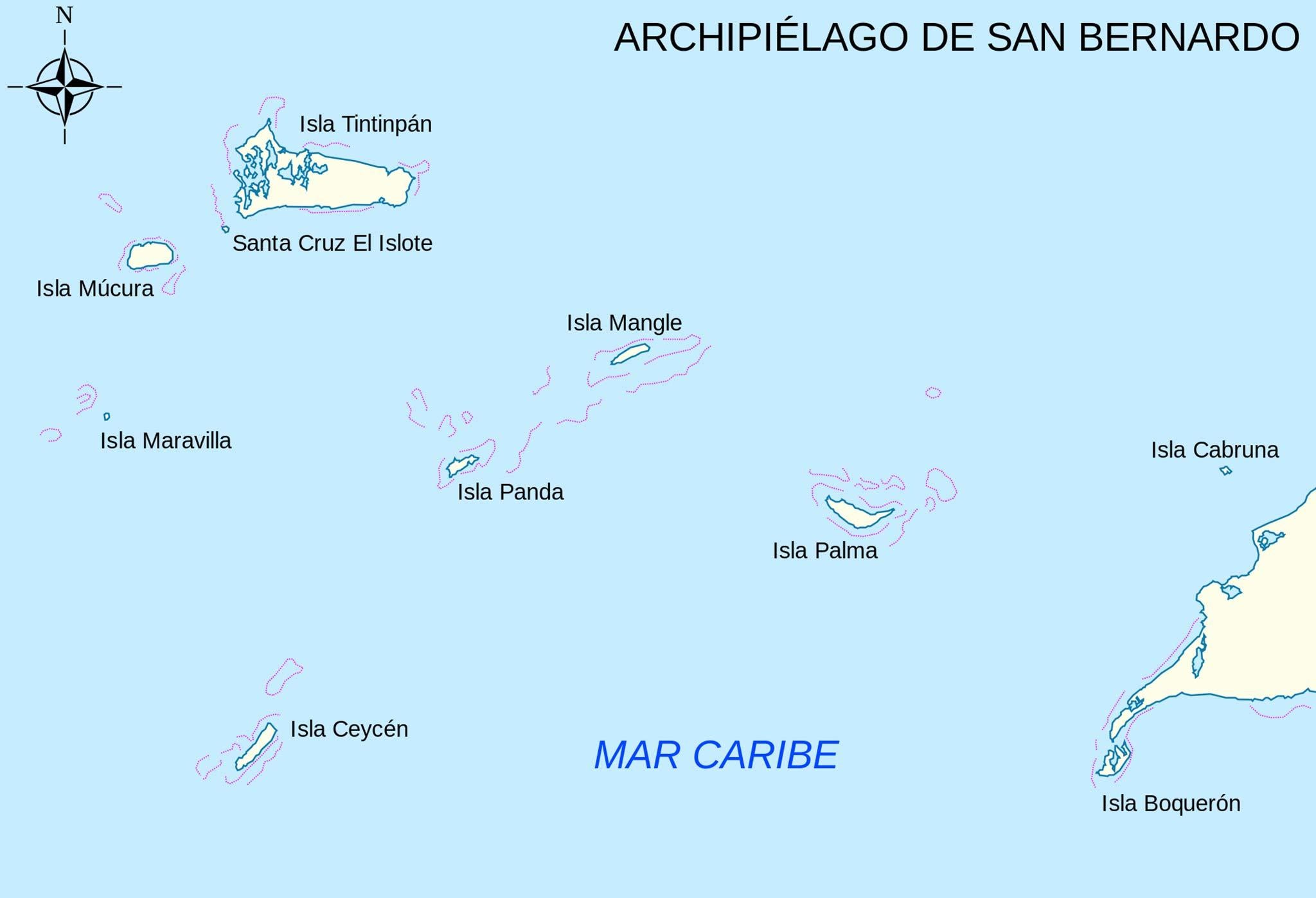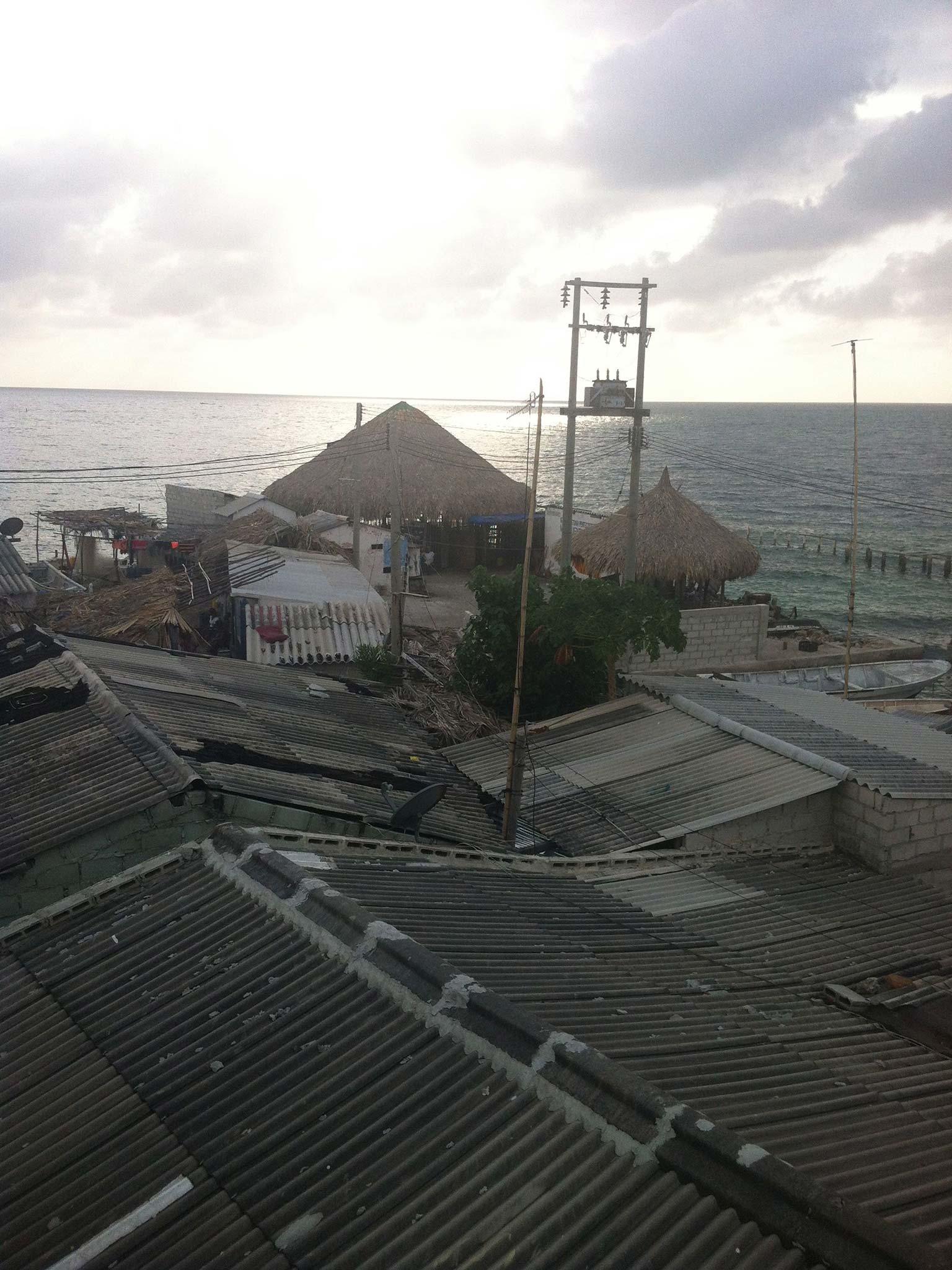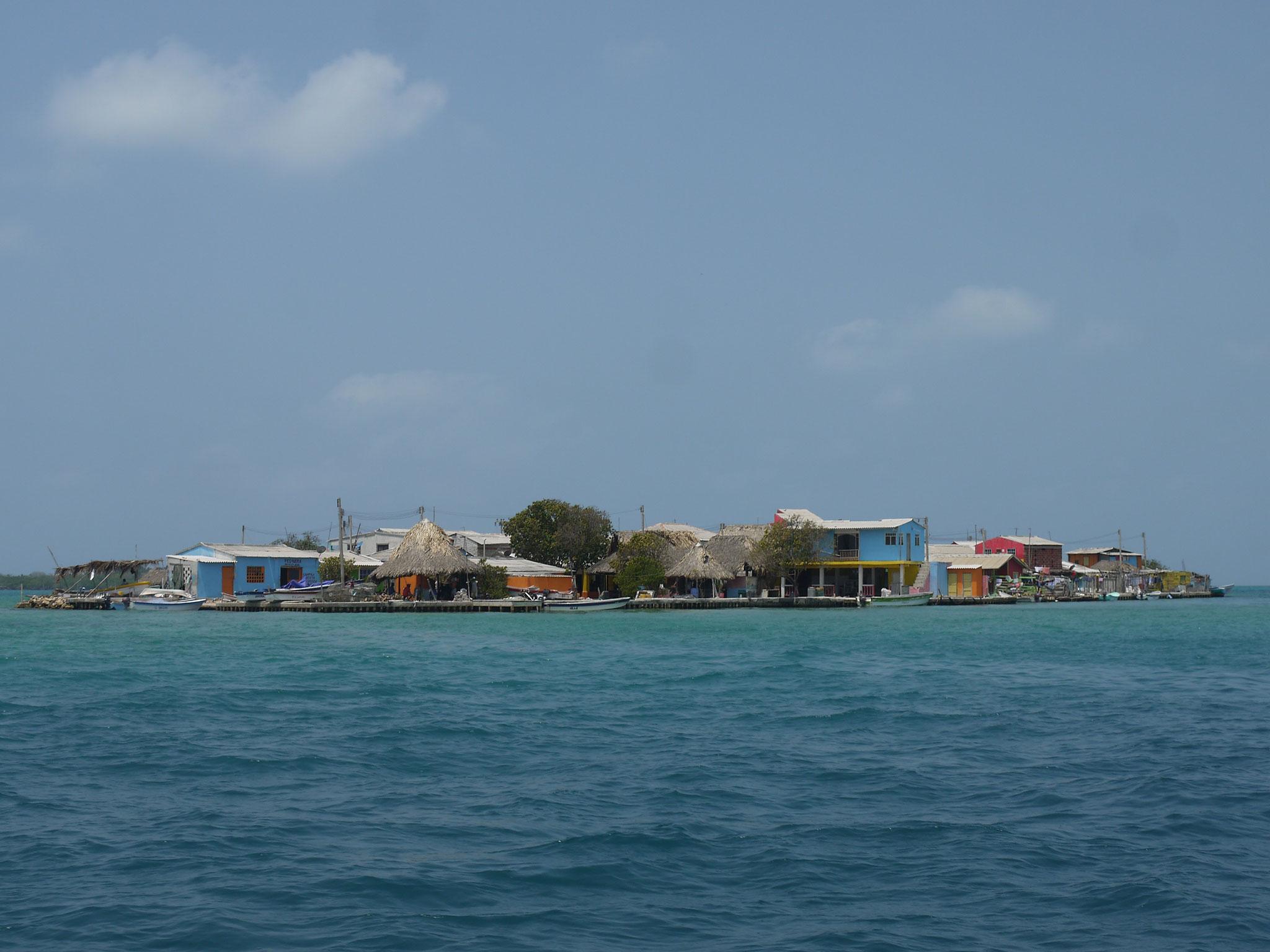The most densely populated place on Earth is not where you might think
The dead are buried on a neighbouring island, there are no toilets, and the children play in the sea. Lee Williams reports on the daily struggles of the inhabitants of Santa Cruz del Islote

Your support helps us to tell the story
From reproductive rights to climate change to Big Tech, The Independent is on the ground when the story is developing. Whether it's investigating the financials of Elon Musk's pro-Trump PAC or producing our latest documentary, 'The A Word', which shines a light on the American women fighting for reproductive rights, we know how important it is to parse out the facts from the messaging.
At such a critical moment in US history, we need reporters on the ground. Your donation allows us to keep sending journalists to speak to both sides of the story.
The Independent is trusted by Americans across the entire political spectrum. And unlike many other quality news outlets, we choose not to lock Americans out of our reporting and analysis with paywalls. We believe quality journalism should be available to everyone, paid for by those who can afford it.
Your support makes all the difference.If asked to think of one of the most overcrowded places in the world you might come up with a city such as Hong Kong, Delhi or Mumbai, perhaps somewhere in the middle of Tokyo, or a cramped favela in Rio perhaps…
You probably wouldn’t think of a Caribbean island. Yet Santa Cruz del Islote, off the north coast of Colombia, is claimed to be the most densely populated island in the world and one of the most overcrowded places on Earth. With an area of just 0.8 hectares – about the size of a football pitch – and a population of up to 1,200 at peak times, it is easy to see why.
Space is so limited that the dead are buried on a neighbouring island, children play in the sea, and even a kick-around necessitates a boat trip elsewhere. The island’s drinking water has to be brought in by boat from the mainland, and there are no toilets or sewage system – most islanders still use the sea.
There is a saying about Santa Cruz del Islote that the people live so close together, when they sleep they dream the same dream. But not all the challenges on Islote come from its size. The islanders, it seems, have some very powerful enemies. “There is a lot of interest from very important people who want those islands for themselves, ” says Juan Fernando Sanchez Jaramillo, a human rights lawyer from Bogota who fights for the rights of the islanders.

Land on the San Bernardo archipelago, of which Islote is a part, is being bought up increasingly by some of Colombia’s wealthiest and most influential citizens, according to the lawyer. And some of the newly arrived glitterati see it as an embarrassment to have what Sanchez Jaramillo calls a “favela in the sea” so close to their homes. This floating favela, three hours’ boat ride from Cartagena, is home to an Afro-Colombian community of fisher people, who settled here shortly after the abolition of slavery in the 19th century. The surrounding mangrove islands were plagued by mosquitoes but the barren rock of Islote offered the fishermen and their families a home that was mercifully free of the pests. Today the inhabitants still scrape a living from fishing but they have no rights over the tiny patch of land that has been their home for more than 150 years.
Most black and indigenous communities in Colombia are given rights called '‘collective titling'’, Sanchez Jaramillo explains, which allows the community as a whole to own the land. But these rights have never been extended to the inhabitants of Islote. One reason for this, the lawyer believes, is institutional racism. “Islote is part of the jurisdiction of Cartagena,” he says, “and Cartagena has never been interested in the islands. It never invested money in the islands because of this racism, which is especially strong in Cartagena.”
Antipathy and political apathy have meant that Islote is excluded from many basic human rights as well. Although drinking water is supposed to be delivered in a weekly boat from Cartagena, in reality the ship might not return for weeks or even months. Instead islanders have been forced to turn to the skies. Most residents have built structures on their homes to collect rainfall but the water is untreated leading to problems of stomach infections and skin diseases, especially in the island’s population of 300 children.
Similarly waste should be collected weekly from Cartagena but the boat often goes unseen for periods of up to a month. The build-up of rubbish began to lead to health problems until the islanders took matters into their own hands, shipping it to a nearby island. To combat such health problems Islote has a single medical centre with a few pieces of rusting equipment and a solitary, underpaid nurse. A visiting doctor comes every two weeks but any serious illness or emergency sees all the islanders chip in to pay for a boat to the mainland. That’s if a boat is available or the seas are not too rough for the crossing. In any case the journey takes three quarters of an hour. “Forty-five minutes in an emergency, maybe the person is dead, ” Sanchez Jaramillo points out.
Until last year the only electricity on Islote came from a diesel-powered generator that the islanders could only afford to operate part of the day. Each day a designated islander would collect money from all the families to run the generator that evening. If he didn’t collect enough money the electricity didn’t come on. There wasn’t even enough power to run the medical centre’s forlorn x-ray machine.

In 2015, thanks to a public legal action, the government was forced to install solar panels on the island but even this has led to unforeseen problems according to Lavinia Fiori, an anthropologist from the nearby island of Isla Grande, who also fights for the islanders’ rights. “In one month there were not two TVs on all the island, but 20 TVs,” says Fiori. “And the lights are always on. Now all the people are buying electrical equipment and there will not be enough electricity. The innovation arrived but didn’t come with education.”
Education is another thing the island struggles with. The ramshackle three-storey Public School only teaches up to primary age. For secondary school the children have to travel to Cartagena where they invariably find themselves far behind the other students. Instead, many choose to stay on Islote and take up the traditional family business of fishing. The problem is that, thanks to climate change and unsustainable fishing practices, the fish have more or less run out. Irresponsible industrial fishing – sometimes even involving dynamite – has destroyed the coral reefs and so depleted stocks that fishermen from Islote can now go several days without catching a single fish.
As a solution the waters around Islote were made a national park in 1996 and industrial fishing was banned. But the Rosario and San Bernardo Corals National Natural Park has brought its own set of problems, limiting islanders’ livelihoods to subsistence fishing and banning them from building any further structures, effectively shackling their development.
“The National Park arrived but without any clever methodology, ” says Fiori. “They said you cannot fish, you cannot take mangroves, you cannot, you cannot. They are trapped in ancient legislation.”
The situation is so bad that many residents now see no other solution than to leave the island – an eventuality that Sanchez Jaramillo believes the authorities have secretly intended since a legal bid to remove them failed two years ago. “Cartagena isn’t going to evict them,” he says, “but because they have public policies to protect the environment but not the communities, it’s an invisible way to exclude them. ”

With their homes and way of life under threat, many islanders are turning to drugs as a form of escapism. “The only thing you can do for recreation is drugs and alcohol,” says Fiori. “It’s a question of freedom,” adds Sanchez Jaramillo, “people of the city have the freedom to consume or not but here it’s a question of addiction. ”
Yet despite all the problems, there are signs that things might be looking up. To fight the legal eviction in 2014 the islanders, with the help of Sanchez Jaramillo, formed a ‟consejo comunitario” or community council, a political body used by black and indigenous communities to negotiate with the government. Now campaigners such as Sanchez Jaramillo and Fiori are able to use the community council to fight for further rights such as, ultimately, collective ownership of the island.
In the meantime they are struggling against some of the oppressive legislation surrounding the national park to provide areas for the islanders to breed and cultivate their own fish. But Fiori has much more ambitious plans. She wants to build platforms in the sea to create more living space, and to generate income and food while at the same time providing structures on the sea bed to help regenerate the lost coral reefs. “We want small-scale development,” says Fiori, “where you can erect restaurants for tourists, you can put cages for mariculture, you can place compost and harvest fruit and vegetables. We have to think in another way. We have to be creative.”
Fiori admits that her dreams are somewhat utopian but the alternative is, to her, unthinkable. Relocation of the community to the mainland with all its problems of paramilitary violence and poverty would destroy one of Colombia’s – and the world’s – most unique societies. “It’s a very rich community, culturally and historically,” says Fiori. “They are sea people. They are the very few Colombian sea people that we have. They should be allowed to continue to live in the sea. ”
Join our commenting forum
Join thought-provoking conversations, follow other Independent readers and see their replies
Comments